 |
 |
 |
| |
Cytokines Induced by a Toll-Like Receptor 7 Agonist Potently Inhibit HBV RNA, DNA, and Antigen Levels in Primary Human Hepatocytes
|
| |
| |
Reported by Jules Levin
AASLD 2014 Nov 7-11 Boston
Congrong Niu, Stephane Daffis, Mei Yu, Guofeng Cheng, William E. Delaney IV, Simon P. Fletcher
Gilead Sciences, Inc., Foster City, CA
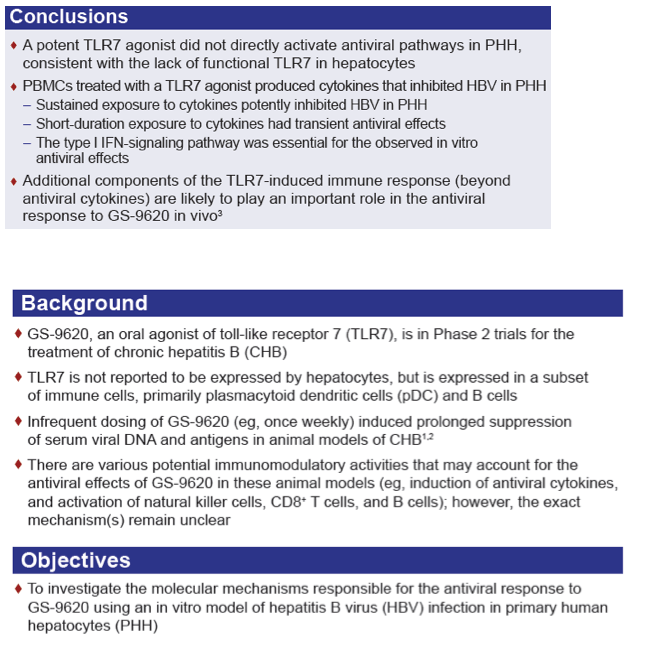
Program abstract:
Background & Aims: GS-9620, an oral agonist of toll-like receptor 7 (TLR7), is in phase 2 trials for the treatment of chronic hepatitis B (CHB). Infrequent dosing of GS-9620 (e.g. once a week) induced prolonged suppression of serum viral DNA and antigens in animal models of CHB. Here we investigated the molecular mechanisms that contribute to the antiviral response to GS-9620 by evaluating the antiviral activity of TLR7 agonists in vitro.
Methods: Primary human hepatocytes (PHH) were infected with HBV and ≥3 days later were treated with a TLR7 agonist (compound A), with media from human PBMCs treated with the TLR7 agonist (TLR7 conditioned media; TLR7-CM) or with recombinant cytokines. Antiviral activity was evaluated by quantifying extracellular HBV DNA (qPCR), HBeAg and HBsAg (ELISA), as well as intracellular HBV RNA (qRT-PCR).
Results: The TLR7 agonist compound A (a close analog of GS-9620), had no direct antiviral activity in HBV-infected PHH, consistent with the lack of functional TLR7 in hepatocytes. In contrast, sustained exposure of HBV-infected PHH to TLR7-CM strongly reduced the levels of HBV DNA and HBeAg (>90%), as well as HBsAg and HBV RNA (>75%), without detectable toxicity. Reductions in viral parameters were observed when PHH were treated with TLR7-CM early (3 days) or late (13 days) post-infection, but were not induced by media from control DMSO-treated PBMCs. We next compared the durability of short (3 day) and long (10 day) treatment of HBV-infected PHH with TLR7-CM. Short duration treatment (days 3-6 post-infection) only transiently reduced HBeAg. In contrast, prolonged treatment (days 3-13 post-infection) induced more sustained suppression of HBeAg, with rebound still incomplete 7 days after removal of TLR7-CM (day 20). A survey of cytokines in TLR7-CM identified recombinant IFN-α2a as a potent antiviral cytokine (EC50 ≤ 10 IU/mL for HBV DNA and HBeAg) in HBV-infected PHH. Recombinant TNF-α, IFN-γ and IFN-λ1 also strongly reduced HBV DNA, RNA and antigen levels, whereas IL-6 had only weak antiviral activity. Since TLR7 agonists induced substantially more IFN-α and IL-6 in human PBMCs than other cytokines, these data indicated that IFN-α was likely the principal mediator of TLR7-CM antiviral activity in HBV-infected PHH.
Conclusion: Sustained exposure to antiviral cytokines directly induced by TLR7 activation, such as IFN-α, potently inhibited HBV in PHH in vitro. However, since short duration exposure had only a transient antiviral effect, additional components of the TLR7-induced immune response may also play an important role in the antiviral response to GS-9620 in vivo.
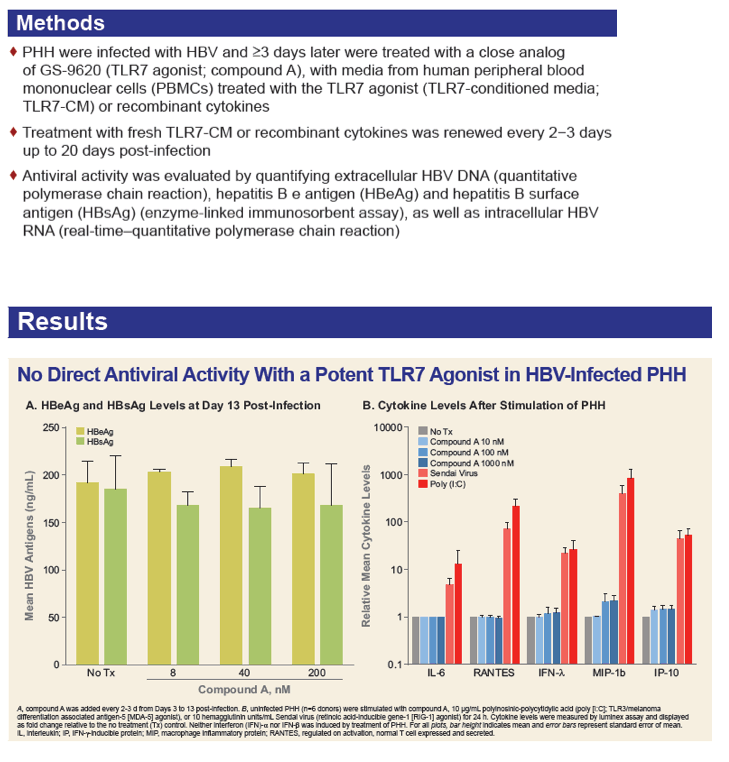
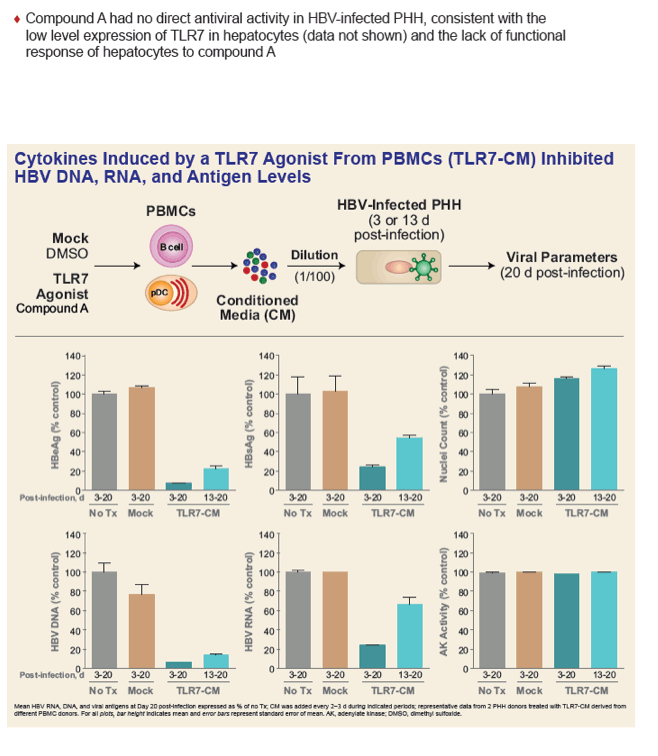
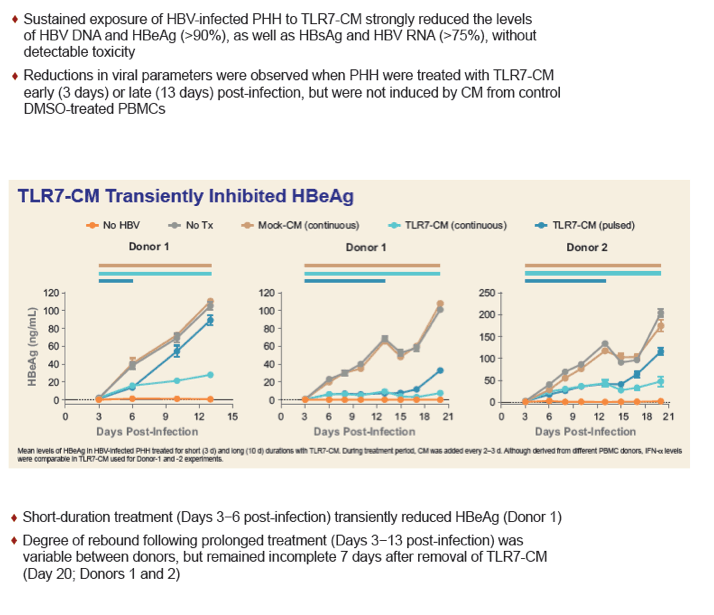
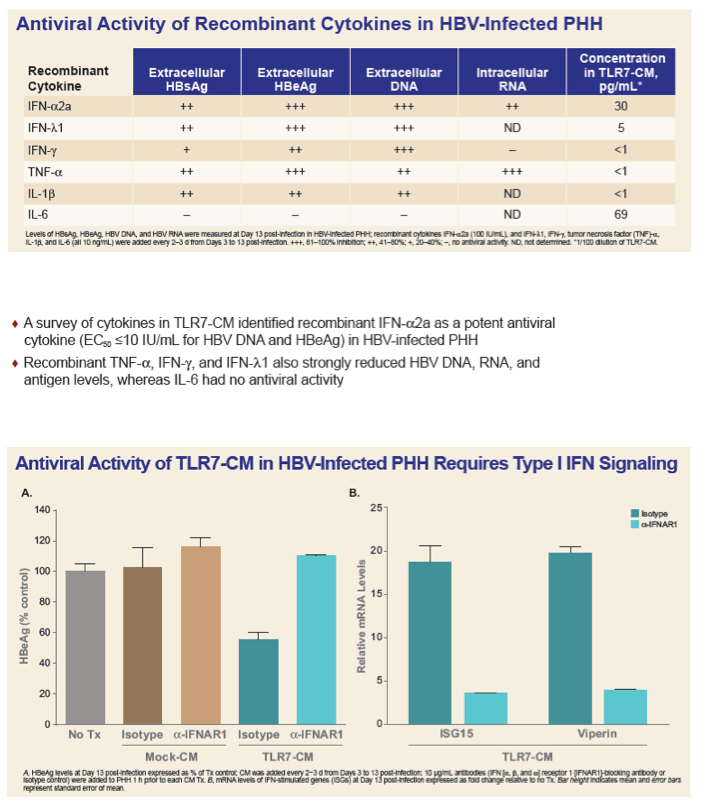

|
| |
|
 |
 |
|
|